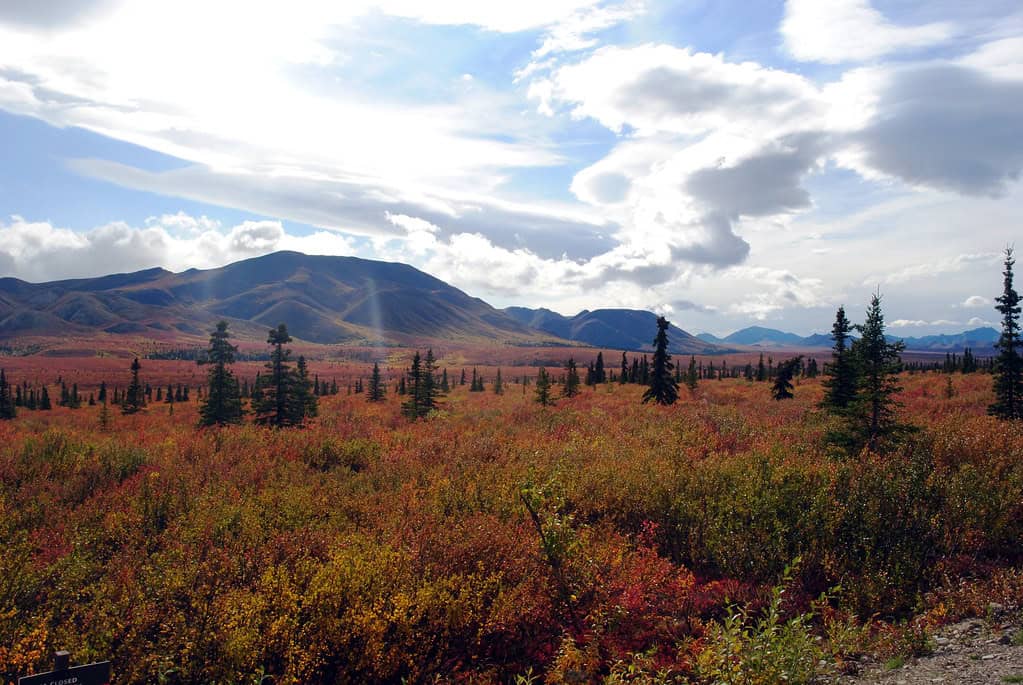America’s national and state parks offer some of the most spectacular wildlife viewing opportunities in the world. From the iconic bison herds of Yellowstone to the elusive Florida panthers of the Everglades, these protected areas serve as vital sanctuaries for diverse ecosystems and the creatures that inhabit them. Whether you’re an avid wildlife photographer, a nature enthusiast, or simply someone who appreciates the beauty of animals in their natural habitat, these 12 parks showcase the incredible biodiversity that exists across the United States. Each location offers unique ecosystems and distinctive wildlife viewing experiences that highlight America’s commitment to conservation and the preservation of natural habitats.
12. Yellowstone National Park, Wyoming/Montana/Idaho

As America’s first national park, Yellowstone remains the crown jewel of wildlife viewing in the United States. The park’s 2.2 million acres harbor the largest concentration of mammals in the lower 48 states, including the country’s most famous bison herd. Approximately 5,000 bison roam the park’s grasslands, representing an incredible conservation success after the species was nearly hunted to extinction in the 19th century. Visitors can also spot grizzly and black bears, gray wolves (reintroduced in 1995), elk, pronghorn, bighorn sheep, and moose. The Lamar Valley, often called “America’s Serengeti,” offers the best wildlife viewing opportunities, particularly at dawn and dusk when animals are most active. Beyond mammals, the park is home to nearly 300 bird species, numerous fish species, and countless smaller creatures that complete this complex ecosystem.
11. Everglades National Park, Florida

The Everglades encompasses the largest subtropical wilderness in the United States, protecting an unparalleled landscape of sawgrass marshes, mangrove forests, and pine flatwoods. This unique “River of Grass” provides essential habitat for some of America’s most endangered species, including the Florida panther, of which fewer than 200 remain in the wild. American alligators and crocodiles coexist here – the only place in the world where these two reptiles live side by side. The park’s waterways teem with life, from manatees and bottlenose dolphins to bull sharks and sawfish. Birding enthusiasts flock to the Everglades to spot roseate spoonbills, wood storks, and great blue herons among the more than 360 bird species identified within the park. Anhinga Trail and Shark Valley provide excellent wildlife viewing platforms, while boat tours offer chances to see aquatic creatures up close.
10. Denali National Park and Preserve, Alaska

In the shadow of North America’s tallest peak, Denali National Park protects six million acres of wild Alaska, home to some of the continent’s most impressive mammals. The “Big Five” of Denali – grizzly bears, wolves, moose, caribou, and Dall sheep – draw wildlife enthusiasts from around the world. Unlike many other parks, Denali restricts private vehicle access, requiring visitors to use the park’s bus system, which maximizes wildlife viewing opportunities while minimizing human impact. With fewer than 60 miles of roads in this vast wilderness, many animals remain truly wild, unhabituated to human presence. The park’s alpine tundra allows for unobstructed viewing across vast distances, particularly in areas like Sable Pass and Polychrome Pass. Beyond the Big Five, visitors might spot red foxes, wolverines, lynx, and over 160 species of birds, including majestic golden eagles soaring above the mountains.
9. Katmai National Park and Preserve, Alaska
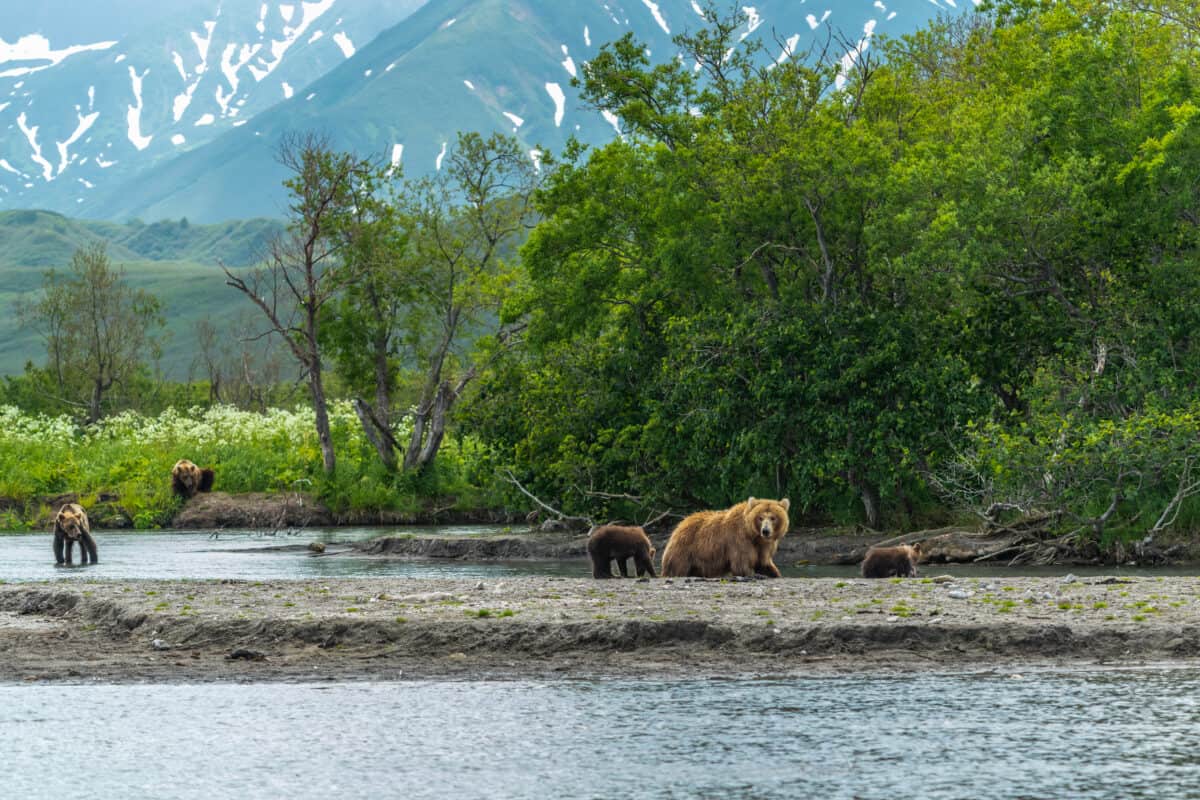
World-famous for its brown bear population, Katmai provides one of the most reliable opportunities to witness these magnificent creatures in their natural environment. During the summer salmon runs, particularly in July and September, visitors gather at Brooks Falls to watch as dozens of bears gather to feast on migrating sockeye salmon. Some bears catch fish in mid-air as the salmon attempt to leap upstream, creating unforgettable photographic opportunities. An estimated 2,200 brown bears inhabit Katmai, representing one of the highest concentrations in the world. Beyond bears, the park protects important populations of moose, caribou, wolves, and marine mammals along its coastline. Katmai’s remote location – accessible primarily by floatplane – helps preserve its wilderness character and ensures wildlife behaves naturally. The park’s world-renowned bear-viewing platforms at Brooks Camp provide safe, responsible viewing opportunities under the guidance of experienced rangers.
8. Channel Islands National Park, California
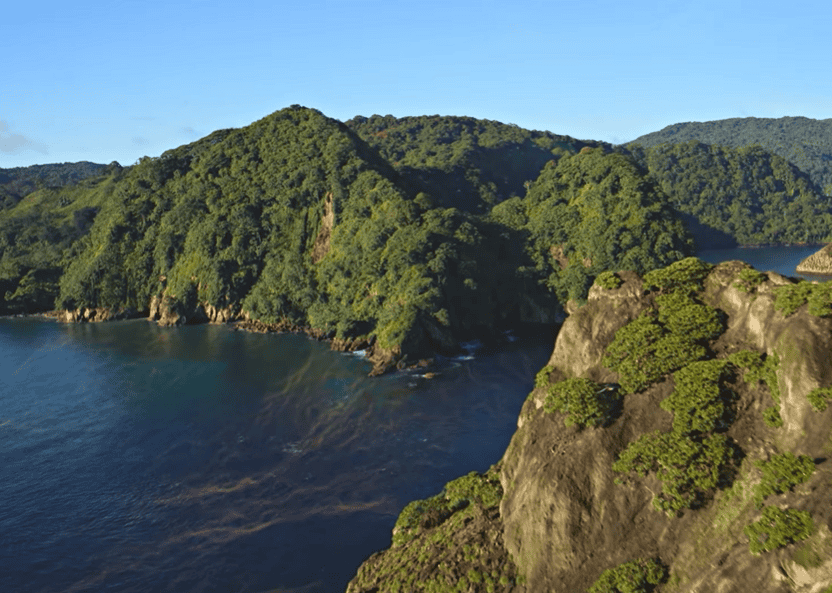
Often called “North America’s Galapagos,” the five islands comprising Channel Islands National Park harbor unique species found nowhere else on Earth. The Channel Island fox, one of the smallest fox species in the world, represents an extraordinary conservation success, having recovered from near extinction. Marine life abounds in the park’s protected waters, where visitors can observe harbor seals, California sea lions, and northern elephant seals hauled out on beaches or rocks. The nutrient-rich waters surrounding the islands attract numerous cetaceans, including blue whales (the largest animals on Earth), humpback whales, gray whales, and several dolphin species. Birders treasure the islands for species like the island scrub-jay, found exclusively on Santa Cruz Island. Anacapa Island hosts the largest breeding colony of western gulls in the world, while thousands of Cassin’s auklets and ashy storm-petrels nest on Santa Barbara Island. Snorkeling or kayaking the kelp forests surrounding the islands reveals an underwater ecosystem equally diverse as what’s found on land.
7. Grand Teton National Park, Wyoming
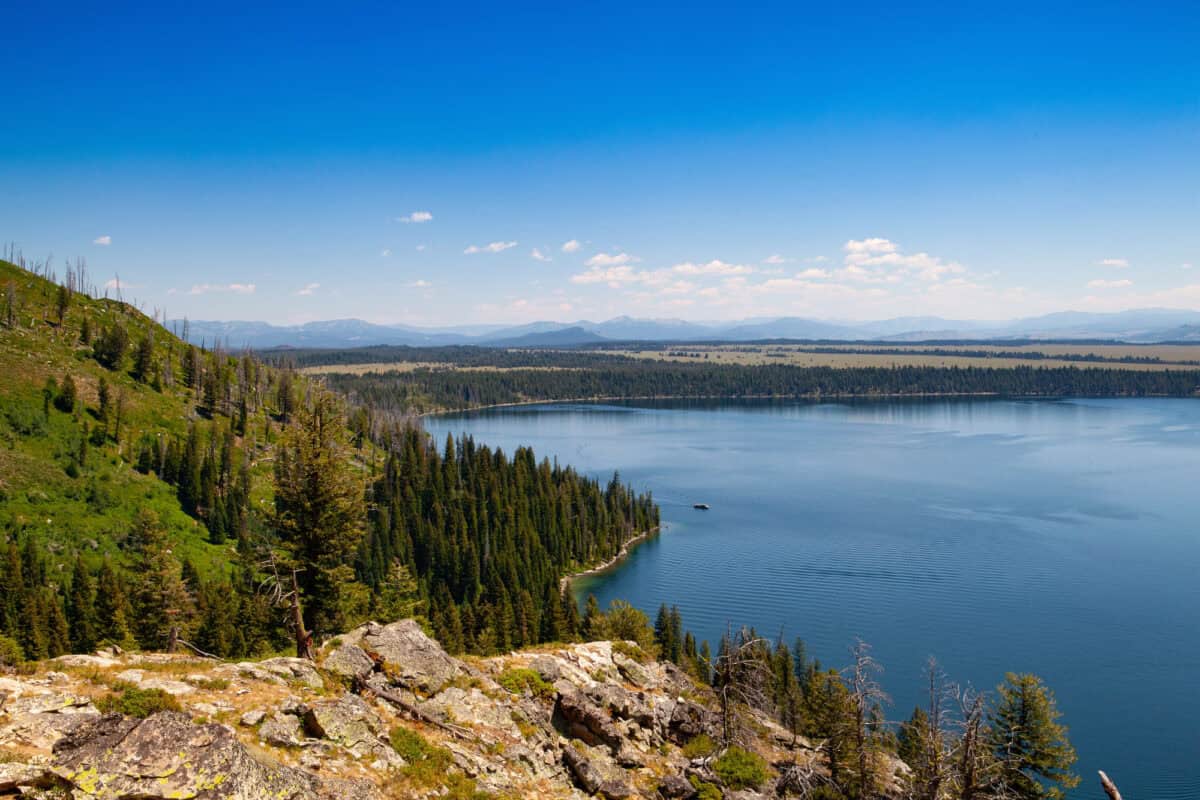
Set against the dramatic backdrop of the jagged Teton Range, Grand Teton National Park offers some of the most picturesque wildlife viewing in America. The park’s diverse habitats, from sagebrush flats to alpine meadows and wetlands, support remarkable biodiversity. Visitors regularly encounter North America’s largest wild elk herd, which migrates through the park seasonally. Moose frequent the willow thickets along the Snake River and around smaller lakes and ponds, particularly at dawn and dusk. The park’s beaver population engineers wetland habitats that benefit countless other species. Predators include grizzly and black bears, wolves, coyotes, and the elusive mountain lion. Grand Teton’s proximity to Yellowstone creates a connected ecosystem allowing wildlife to follow natural migration patterns. Oxbow Bend, Willow Flats, and Antelope Flats provide excellent viewing opportunities, with the latter also home to the park’s iconic pronghorn antelope and historic Mormon Row barns, creating perfect photographic compositions of wildlife against historic and natural backdrops.
6. Olympic National Park, Washington

Olympic National Park encompasses extraordinary ecological diversity, from Pacific coastline to temperate rainforest to alpine meadows, all supporting unique wildlife communities. Along the rugged coastline, tide pools reveal colorful sea stars, anemones, and numerous marine invertebrates, while harbor seals rest on offshore rocks. The park’s 73 miles of wilderness coastline provide important habitat for numerous shorebirds and seabirds. In the Hoh and Quinault Rainforests, where annual rainfall exceeds 150 inches, Roosevelt elk – the largest subspecies of North American elk – browse among ancient moss-draped trees. These magnificent animals were saved from extinction in the early 20th century when the area was protected partly for their preservation. The park’s isolation has created specialized animal adaptations, including endemic species like the Olympic marmot, Olympic torrent salamander, and Olympic snow mole. Mountain goats, though non-native, can be spotted in the park’s alpine areas, while black bears and mountain lions maintain healthy populations throughout the less-visited backcountry.
5. Acadia National Park, Maine

As the oldest national park east of the Mississippi, Acadia protects a unique intersection of northern forest, coastal, and mountain ecosystems along Maine’s rugged Atlantic coastline. The park’s location along the Atlantic Flyway makes it a premier destination for birders, with over 300 species recorded, including Atlantic puffins on nearby islands during the breeding season. Peregrine falcons, once extirpated from the eastern United States, now successfully nest on the park’s cliffs after reintroduction efforts. The intertidal zones reveal a rich diversity of marine life during low tide, with tide pooling being a popular activity at Schoodic Point and Ship Harbor. White-tailed deer are commonly seen throughout the park, while moose occasionally visit from inland areas. Marine mammals, including harbor seals, porpoises, and several whale species (including humpback, finback, and minke whales), can be observed from coastal headlands or during boat tours from nearby Bar Harbor. The park’s beaver populations have created wetland habitats that attract great blue herons, river otters, and numerous amphibian species.
4. Glacier National Park, Montana

Known as the “Crown of the Continent,” Glacier National Park preserves over one million acres of pristine ecosystem where plant and animal communities remain largely intact. The park boasts more than 70 species of mammals, including all of North America’s native carnivores – grizzly bears, black bears, wolves, mountain lions, lynx, wolverines, and coyotes. Mountain goats and bighorn sheep navigate the park’s steep terrain with remarkable agility, often visible from roadside pullouts along the Going-to-the-Sun Road, particularly near Logan Pass. The Many Glacier area lives up to its reputation as prime wildlife habitat, with moose frequently spotted feeding in wetlands. During summer, wildflower-filled alpine meadows attract numerous pollinators, including the declining western bumblebee. The park’s cold, clean waterways support native bull trout and westslope cutthroat trout, both species of concern throughout their range. Over 260 bird species utilize the park, including golden eagles, osprey, and the elusive harlequin duck, which nests along rapid-filled streams. Glacier’s importance as a wildlife sanctuary will only grow as climate change threatens the park’s namesake features – its rapidly disappearing glaciers.
3. Big Bend National Park, Texas
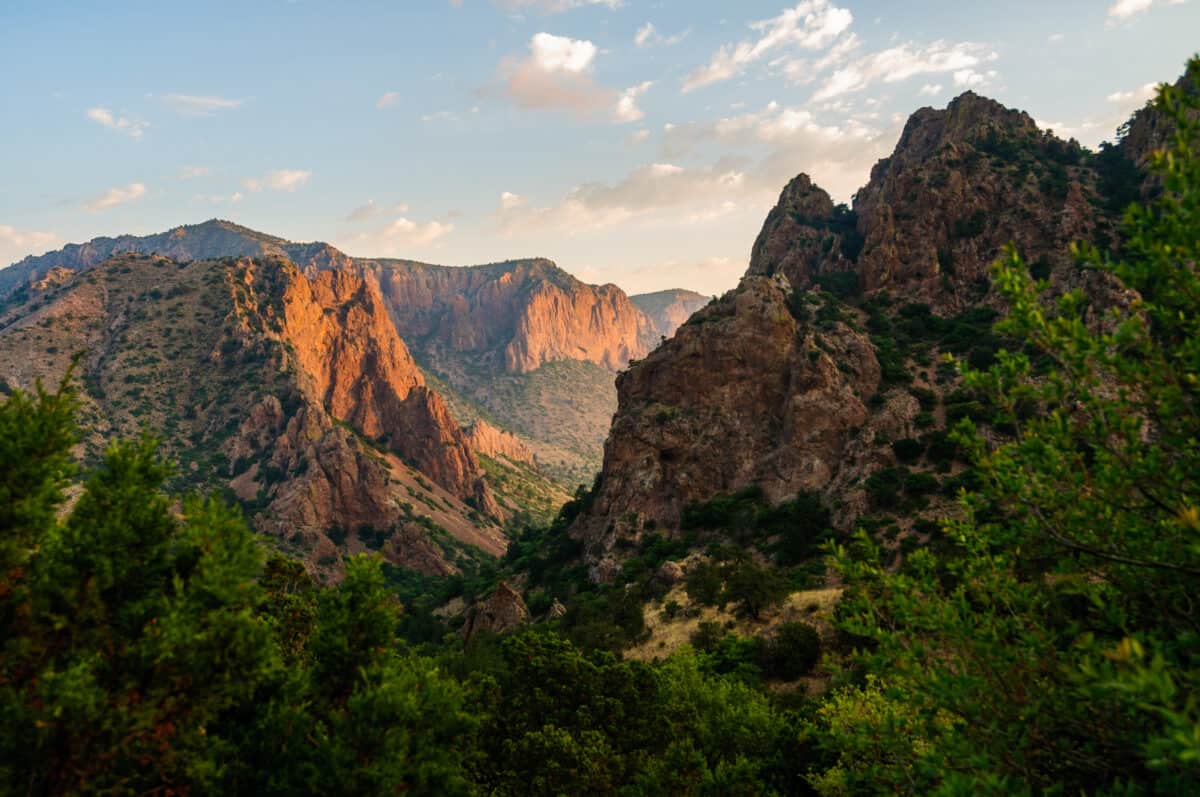
Located along the U.S.-Mexico border where the Rio Grande takes a dramatic turn, Big Bend National Park protects the largest expanse of Chihuahuan Desert ecosystem in the United States. This remote park offers sanctuary to an astonishing diversity of species, including more types of birds (over 450 species), bats (20 species), and cacti than any other national park. The park’s varied elevations – from river corridors to desert to mountains reaching over 7,800 feet – create distinct ecological zones supporting different wildlife communities. Mexican black bears, once extirpated from Texas, have naturally recolonized the park’s Chisos Mountains. Roadrunners, javelinas (collared peccaries), and various reptiles, including the western diamondback rattlesnake, represent archetypal desert species visitors might encounter. Big Bend’s night skies, protected by its remote location and dark sky designation, allow for excellent bat viewing at dusk as these mammals emerge from caves and crevices. The Rio Grande supports several unique aquatic species, including the endangered Big Bend mosquitofish. During migration seasons, the river corridor serves as an essential avian highway, channeling birds through this arid landscape.
2. Cuyahoga Valley National Park, Ohio

Nestled between Cleveland and Akron, Cuyahoga Valley National Park demonstrates how wildlife can recover when given the opportunity. The Cuyahoga River, once so polluted it famously caught fire in 1969, now supports over 70 species of fish and provides habitat for river otters, which were reintroduced to Ohio in the 1980s after being extirpated by the early 20th century. The park’s location along major migration routes makes it a hotspot for birding, with over 200 species recorded. Beaver have returned to the valley, creating wetland habitats that support diverse amphibian populations, including several salamander species. White-tailed deer are abundant, sometimes too much so, creating management challenges as they browse on native vegetation. The park’s mix of forest, field, and wetland habitats creates ecological niches for coyotes, red and gray foxes, and over 30 species of warblers during spring migration. Beaver Marsh, accessible via the Ohio & Erie Canal Towpath Trail, offers excellent wildlife viewing opportunities, particularly at dawn and dusk when muskrats, beavers, and various waterfowl are active. Conservation success stories like the return of nesting bald eagles highlight the resilience of nature when waterways are cleaned and habitats restored.
1. Theodore Roosevelt National Park, North Dakota
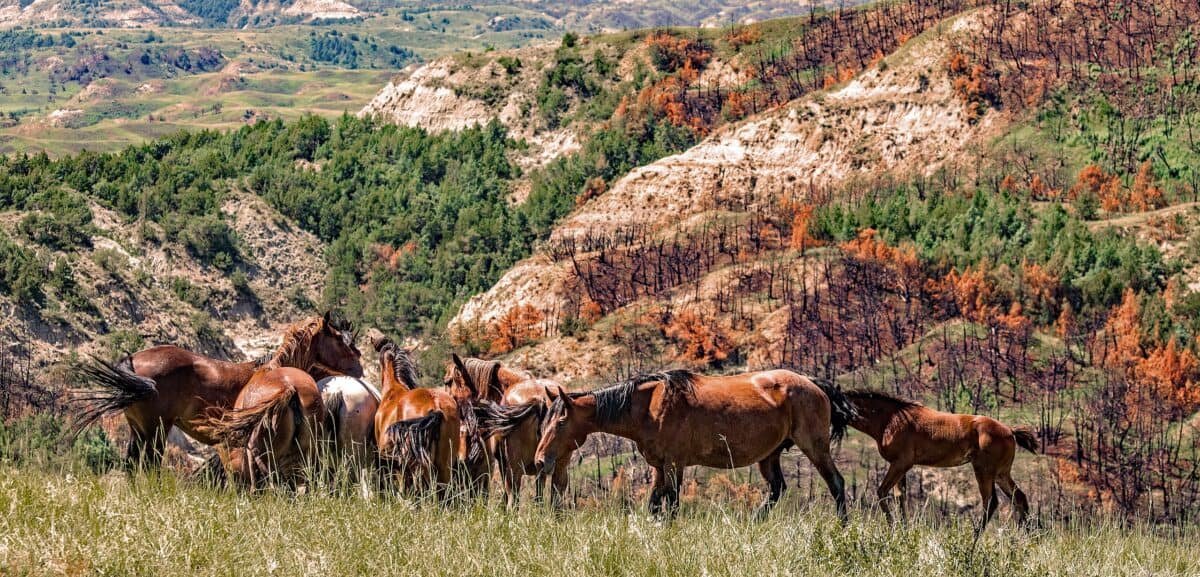
Established to honor the president who championed conservation, Theodore Roosevelt National Park protects a dramatic landscape of badlands that profoundly influenced the young Roosevelt during his time ranching in Dakota Territory. The park’s most iconic residents are its free-roaming bison herds, reestablished from just a few dozen animals to several hundred today. Visitors driving the park’s scenic loops frequently encounter these massive creatures alongside the road – a vivid reminder of the vast herds that once roamed the Great Plains. Wild horses, descendants of ranch stock that escaped or were released, add a romantic element to the landscape as they gallop across the prairie. Prairie dog towns, some covering many acres, provide habitat for burrowing owls and serve as hunting grounds for swift foxes, badgers, and ferruginous hawks. The park’s rugged terrain supports bighorn sheep, reintroduced in the 1950s after the native population was extirpated. Mule deer and white-tailed deer both inhabit the park, with the former preferring the broken badlands terrain. The Little Missouri River corridor attracts numerous bird species, while the park’s mixed-grass prairie ecosystem, increasingly rare across North America, supports specialized grassland species like Sprague’s pipit and Baird’s sparrow.
Conclusion: Wildlife Viewing Conservation and Responsibility

America’s national parks offer unparalleled opportunities to witness wildlife in their natural habitats, but this privilege comes with responsibility. Each park represents a critical conservation effort to preserve both individual species and entire ecosystems for future generations. When visiting these remarkable places, maintaining appropriate distances from wildlife isn’t just safer for humans – it’s essential for the animals’ wellbeing and natural behavior patterns. The continued protection of these diverse ecosystems depends on sustainable visitation practices, adequate funding for conservation programs, and public commitment to preserving these invaluable natural treasures. As climate change and habitat loss threaten biodiversity globally, these protected areas become increasingly vital sanctuaries where the full spectrum of American wildlife can continue to thrive.
- 10 Animals That Use Camouflage Best - August 17, 2025
- 13 Wild Birds That Use Tools to Hunt - August 17, 2025
- 9 Smartest Animal Species in North America—And Why They’re So Clever - August 17, 2025

